Japan’s love affair with rice is no secret. Rice has long been the staple food of Japan and there are many rice-producing regions across the country. Lesser known, however, is that Japan is also home to some absolutely breathtaking rice terraces!
For thousands of years, rice agriculture has played an important role in Japan's culture and history. The traditional method of paddy field rice cultivation was labour-intensive but remains a deeply rooted custom in many parts of Japan. In areas with hilly terrain, small patches of rice fields are built onto the slopes of mountains to create what is known as rice terraces, or Tanada in Japanese.
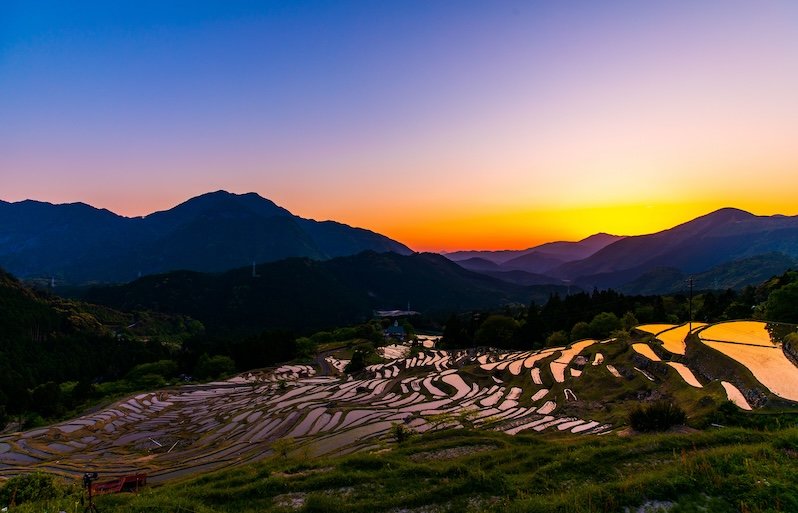
The "Thousand Rice Terraces" of Maruyama Senmaida at Kumano City captured at sunset. (Photo from: Fugamaru-chan via Photo.Mie)
Spring and summer are the perfect seasons to catch a glimpse of the rice terraces in their full beauty. In springtime, the water in the paddy fields reflect the clear blue skies, creating a stunning visual landscape. When summer arrives, the seedlings flourish and transform the tiered rice fields into slopes of verdant green.
For an authentic Japanese experience, there is no better way than to visit some incredible rice terraces and soak in the rustic charms of the countryside.
Hoshitoge Rice Terraces, Niigata Prefecture

Hoshitoge rice terraces is located in the mountains of southern Niigata, a prefecture well-known for producing some of the highest-quality rice in Japan. (Photo from: Niigata Prefectural Tourist Association)
Within the mountains of the Matsunoyama and Matsudai areas in Tokamachi City lie some of the most spectacular rice terraces in Japan. The Hoshitoge rice terraces are made up of around 200 rice paddies of various sizes that cover the vast mountain slopes, and their grandiose beauty will take your breath away.
During spring (when snow melts) and autumn (when snow begins to fall), the rice fields turn into "water mirrors” that glisten in the sunlight. Considered to be one of the best times to visit, this period attracts photographers and tourists from all across Japan.
Not to worry, the beauty of the Hoshitoge rice terraces is multi-faceted and continues to impress across the seasons. The vibrant green paddies of summer are a delight to the senses and the frozen fields in winter are an extraordinary sight. If you are an early riser, misty mornings lend a magical vibe to the picturesque setting as well.
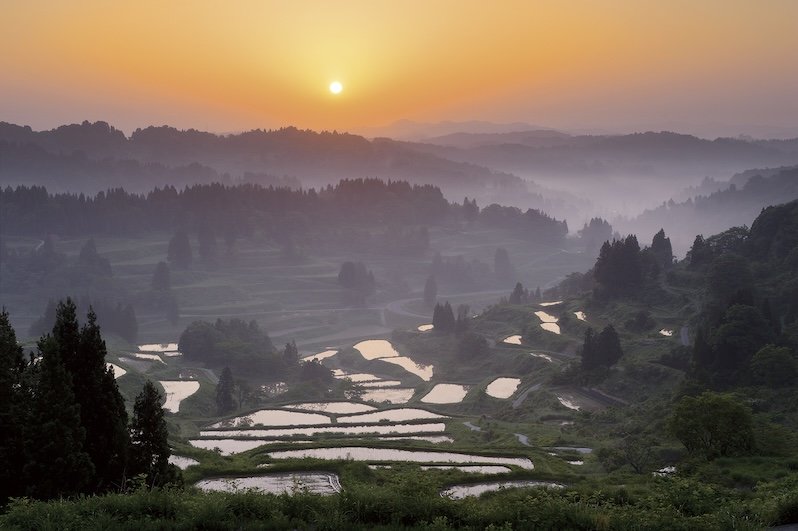
Gleaming rice fields surrounded by a sea of mist creates an ethereal atmosphere. (Photo from: Niigata Prefectural Tourist Association)
While the Hoshitoge rice terraces are a popular attraction in Niigata, they are not a tourist site but an actual place of livelihood for the local farmers. When visiting the rice terraces, please do not trespass on private property and respect the locals at all times.
Maruyama Senmaida, Mie Prefecture
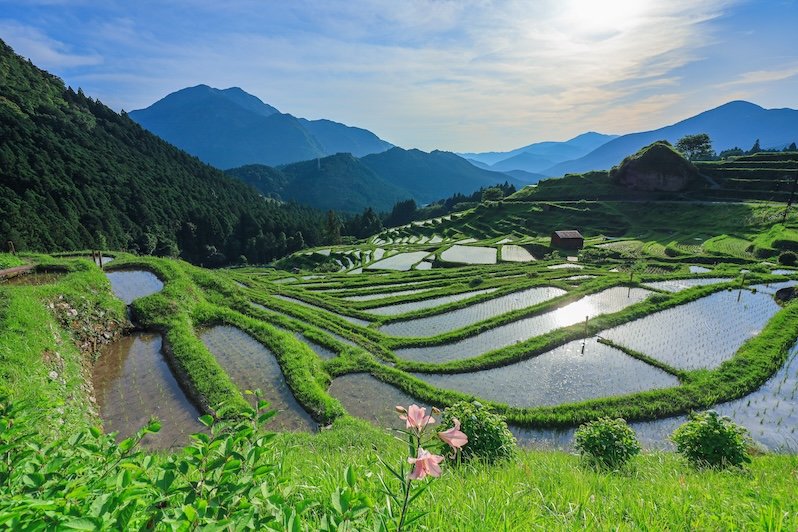
Maruyama Senmaida rice terraces is situated on the slope of Mount Shirakura in Kiwa-cho, Mie Prefecture, and its history dates back to 1601. (Photo from: Fugamaru-chan via Photo.Mie)
There was a time back in ancient Japan when tanada rice fields were found throughout the country’s hilly terrain, but it has become quite a rare sight because of the modernisation of agricultural methods. Fortunately, the centuries-old Maruyama Senmaida in Mie Prefecture still remains, beckoning visitors with its timeless beauty.
Senmaida translates to “one thousand fields” in Japanese. In 1601, this area contained up to 2,240 rice fields, but the number dwindled to 530 by the early 2000s as a result of population decline. The locals were not ready to give up on this valuable cultural heritage. So, they formed the Maruyama Senmaida Preservation Society in 1993 and introduced a unique shared ownership system, where anyone can adopt a field and become an active part of this rice-farming community.
Today, there are more than 1000 rice fields that stand proud and fertile on this land, producing crops of delicious rice just like the good old days. It’s recognised as one of Japan’s “100 Best Rice Terraces.”
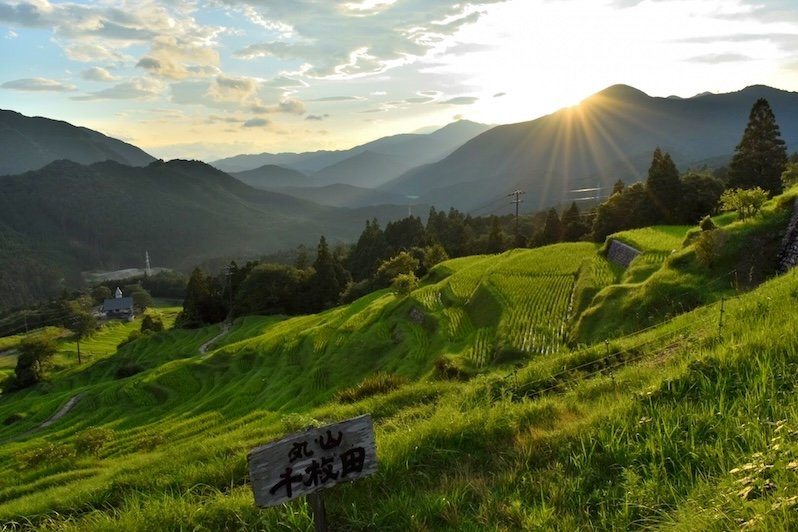
The summer sun beats down on the lush rice fields of Maruyama Senmaida. (Photo from: PhotoAC)
May is a lively month as this is when farmers and owners from all over the country come together to plant rice the traditional way. A good time to visit would be in the summer months. The terraced rice paddies flourish and a luxuriant carpet of green stretches as far as the eyes can see .
Oyama Senmaida, Chiba Prefecture
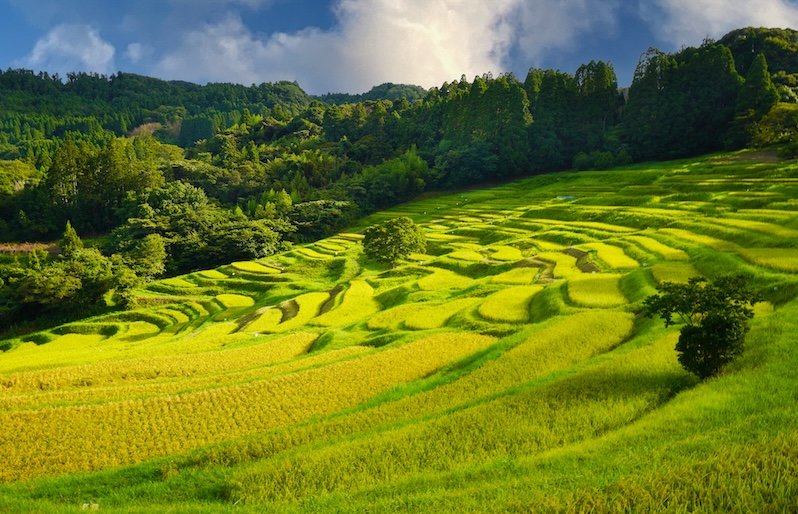
The Oyama Senmaida rice fields stretch out like a beautiful patchwork blanket of green and yellow. (Photo from: PhotoAC)
Over at the southern region of Chiba Prefecture on the Boso Peninsula, the Oyama Senmaida wows visitors with sweeping views of a captivating agricultural landscape. Cascading down a gentle mountain slope, over 300 patches of rice paddies are enveloped by lush greenery, earning recognition as one of Japan’s “100 Best Rice Terraces”!
Although located in the Chiba countryside, Oyama Senmaida is the largest cluster of terraced rice paddies close to Tokyo. It’s a short drive (less than 2 hours) from bustling Tokyo and is also accessible via public transport.
A good activity to include in your day trip itinerary, this rural escapade back to nature will reinvigorate your senses and allow you to discover more about traditional farming culture. For those who are seeking a deeper connection, the Oyama Senmaida Preservation Society organises a variety of hands-on farming activities for locals and tourists alike.
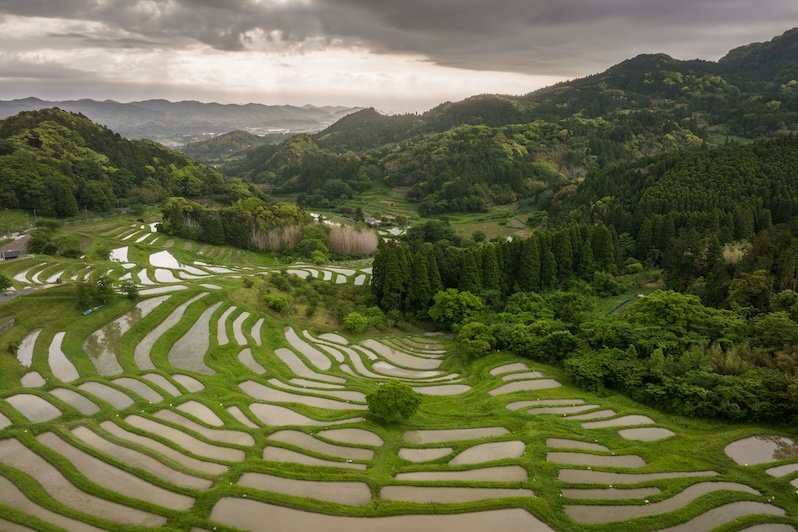
The Oyama Senmaida terraced rice paddies are the closest traditional terraced paddies one can visit from Tokyo. (Photo from: Chiba Prefectural Tourism & Local Products Association)
Between the months of October and January, be prepared to be mesmerised by the Tanada Light Festival. Rows of tiny LED lights illuminate the rice terraces when night falls, creating an enchanting atmosphere set against starry night skies. Even better, visit in the late afternoon to appreciate the changing scenery of the Oyama Senmaida rice terraces from twilight to dusk.
Add these beautiful rice terrace destinations to your next Japan travel itinerary for a truly off-the-beaten-track experience! Not only is the journey incredibly scenic, you can also discover more about Japan’s agricultural history and explore a deeper relationship with the food we eat.

